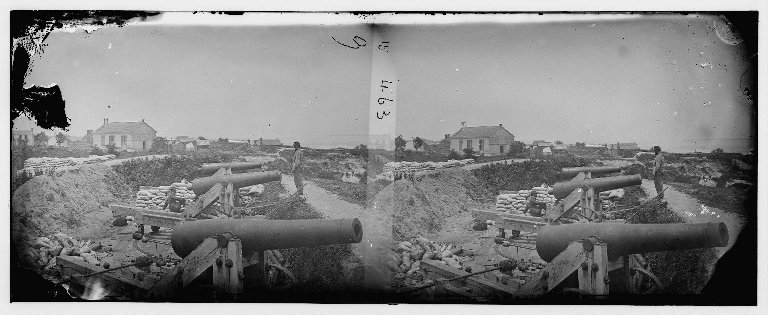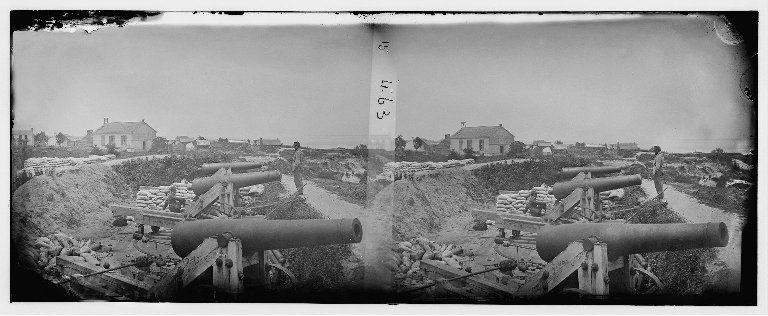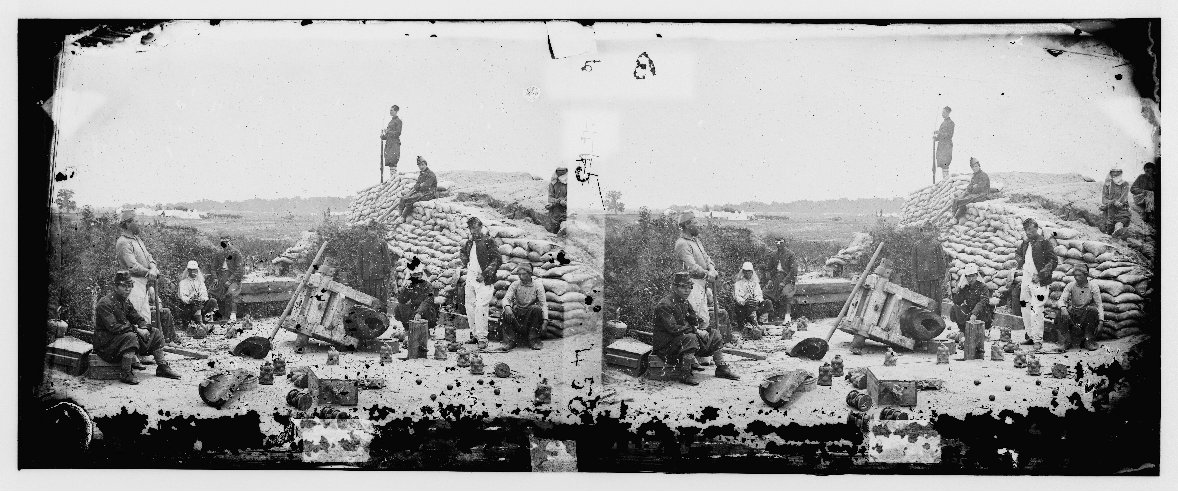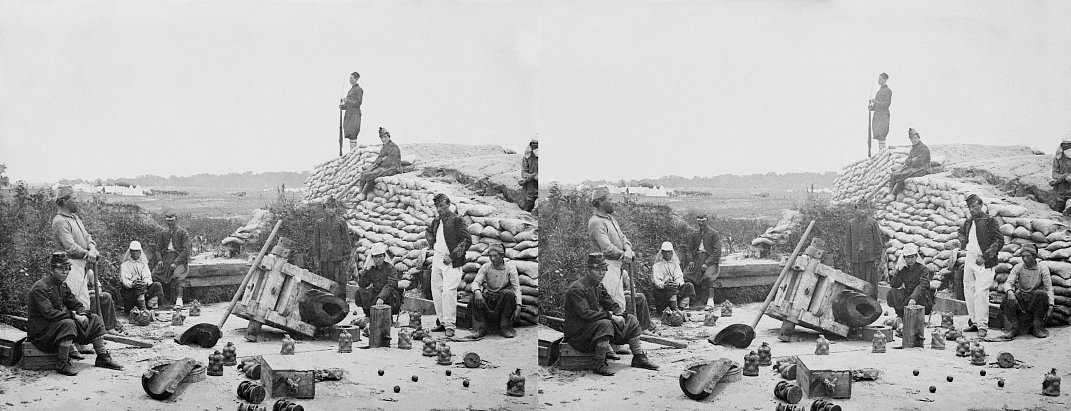The stereographs used in this volume consist of digital prints made from the original negatives, and digital files made from scans of original stereograph cards. Because of the variety of the original sources for these stereographs, the quality of each image varies from very good condition to extremely poor condition. I have endevered to restore each of the digital images from every source to a uniform quality. To do this, I have used a variety of photo editing programs, such as Corel Paint Shop Pro and Adobe Photoshop.
To restore the best quality digital images, all that was required was to remove dust specks and emulsion bubbles from the image. However, most of the images required much more work to restore them to the point where they could be adaquately viewed as a stereograph.
Some of the images in this volume are being shown full-frame for the first time. When the original stereographs were made, sometimes large portions of the image were removed because of the serious flaws in the original negative. During the restoration process, these flaws could be eliminated, which allowed larger areas of the image to be used for the stereograph. For example, the following stereograph originally published by the Gardner Studios shows a naval battery at Yorktown Virginia, with the Nelson Church in the background:

An overall print from the original negative that was used to produce the original stereograph looks like this:

Because of the flaws in the original negative, only the central portion of the image could be used to make the original stereograph.
After restoration of the original image, an intermediate digital image was created that looked like this:

The final stereograph is then created from this intermediate digital image, using as much of the image as possible to create a viable stereograph:

Many of the negatives that were severely damaged can be restored as long as there is no significant damage to both sides of the negative in the same area. For example, in this negative, there is bad cracking and missing pieces on both sides of the negative:

Once the image is restored, it looks like this:

Each of the two images in the photograph had substantial damage. However, because most of the damaged areas of the negative could be restored from the other side, this image could be restored adaquately. This image took three days (at 8 hours a day) to restore.
Copyright © 2007 by Douglas Klopfenstein